
Poster production: Feng Juan
Xinhua News Agency, Tianjin, June 14 (Reporter Zhou Runjian) "The realm of Penglai is separated by wind and smoke, and the Milky Way is connected for nine days." On a summer night, if the weather is fine, in an environment with little light pollution, you will see a milky white light band spanning the sky and running through the north and south above your head. It is like a river, galloping endlessly, and the constellations are bright and star-studded. This is the famous Milky Way.
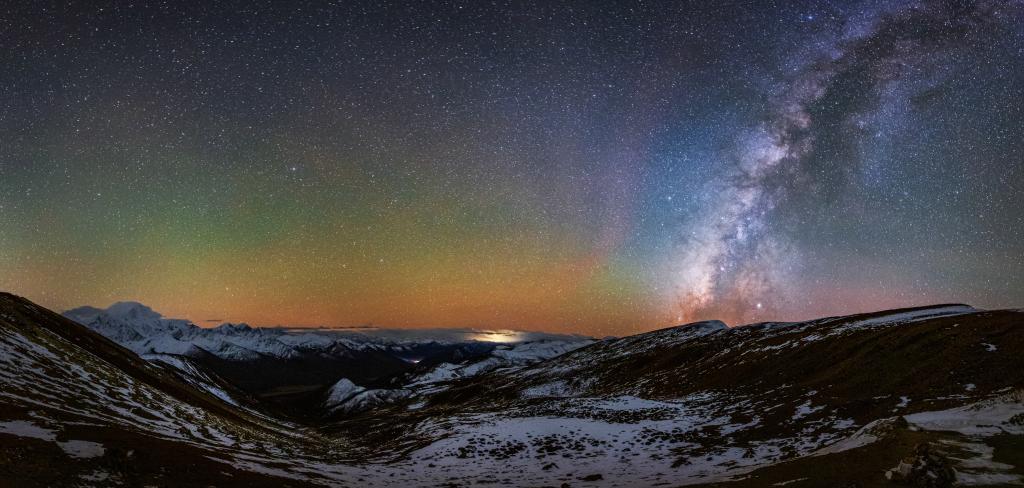
The Milky Way photographed by Beijing astronomy enthusiast Dai Jianfeng at the Yaha Pass in Kangding, Sichuan in November 2019. (Photo provided by me)
The Milky Way is made up of a large number of stars, which were also known as Tianhan, Xinghan, Tianhe, Jianghe, etc. in ancient times. Although the Milky Way can be seen all year round, summer is the perfect season to appreciate the Milky Way. This beautiful band of light extends from the east-north horizon to the south.
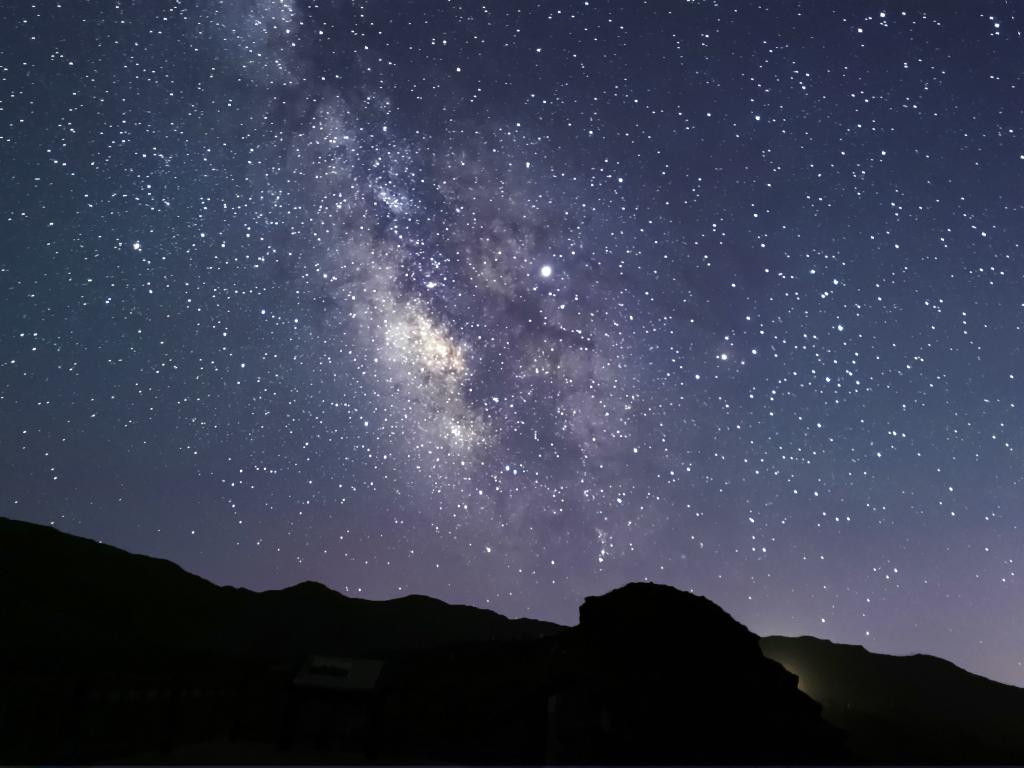
The Milky Way photographed by Beijing astronomy enthusiast Wang Junfeng in Zhangye, Gansu Province in May 2019. (Photo provided by me)
"The sky is as cold as water at night, and I lie down and watch the Cowherd and Vega star." Song Yuanyuan, director of the Tianjin Astronomy Association and an astronomy science expert at the Tianjin Science and Technology Museum, said that in the middle of the Milky Way, there are three bright stars – Vega in Lyra, Cowherd in Aquarius and Tianjin Si in Cygnus – which form the symbol of the summer starry sky – "Summer Triangle", which is approximately a right triangle.
Vega is located at a right angle, emitting a diamond-like light on the west bank of the Milky Way, and is called the "Queen of Summer Nights". The southern vertex of the "Summer Triangle" is Altair, which is on the east bank of the Milky Way and faces Vega across the river; the other vertex of the "Summer Triangle" is Tianjin IV, located at the "tail" of Cygnus, which spans the Milky Way, with two wings extending north and south, and the neck extending along the Milky Way, with the head facing southwest and the tail facing northeast.
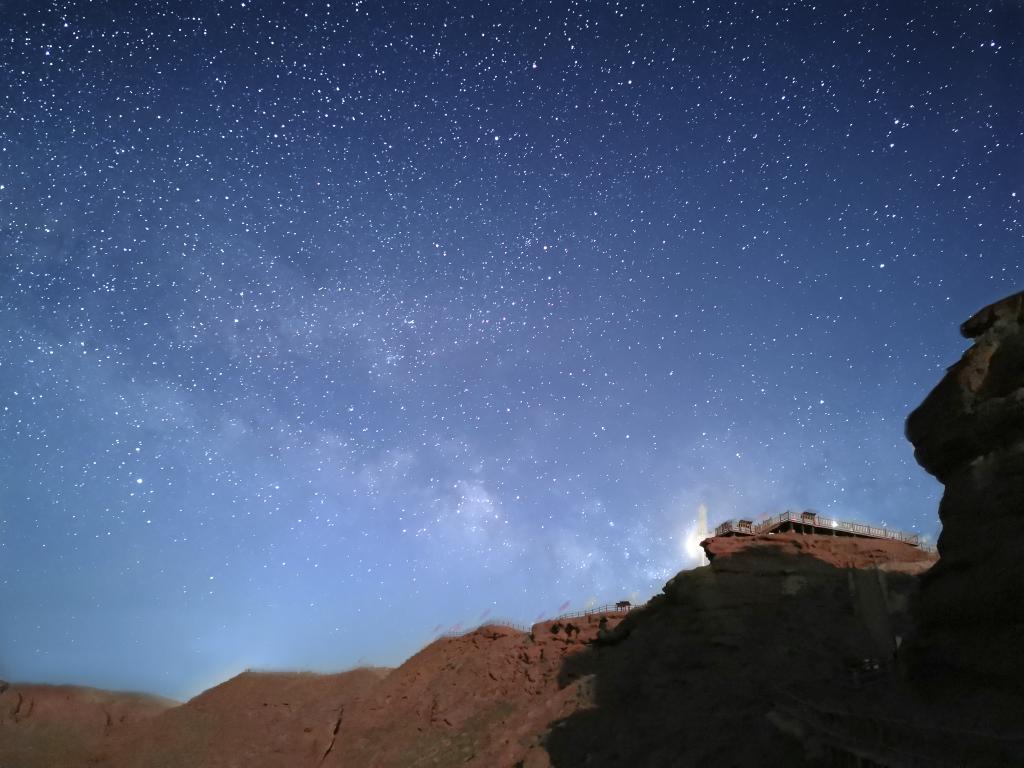
The Milky Way photographed by Beijing astronomy enthusiast Wang Junfeng in Zhangye, Gansu Province in May 2019. (Photo provided by me)
Extending southward from Vega along the bank of the Milky Way, you can see a bright red star, which is Antarctica in Scorpio, also known as "fire". Moving southward from Cowherd along the Milky Way, you can find Sagittarius, which is often called Sagittarius. "The Milky Way in the Sagittarius part is the widest and brightest. Because the direction of Sagittarius is the direction of the center of the Milky Way, which is the famous’Galactic Center ‘. The Chinese 28 constellations, Dou (Nandou Six Stars) and Gi, are in Sagittarius. For the northern hemisphere, the more southern the area, the higher the Sagittarius rises, the more conducive it is to observe those gorgeous deep-sky objects in the direction of the’Galactic Center’." Song Yuanyuan said.

Poster Production: Fang Jinyang
Bright Milky Way, starry, how to shoot the magnificent appearance of the Milky Way?
In the eyes of veteran astronomer Wang Junfeng, shooting the Milky Way is all about "the weather, the location, and the people." He introduced that the best time to shoot the Milky Way in the northern hemisphere is from the end of May to the end of September every year, based on comprehensive factors such as human sleep habits, climate and temperature.
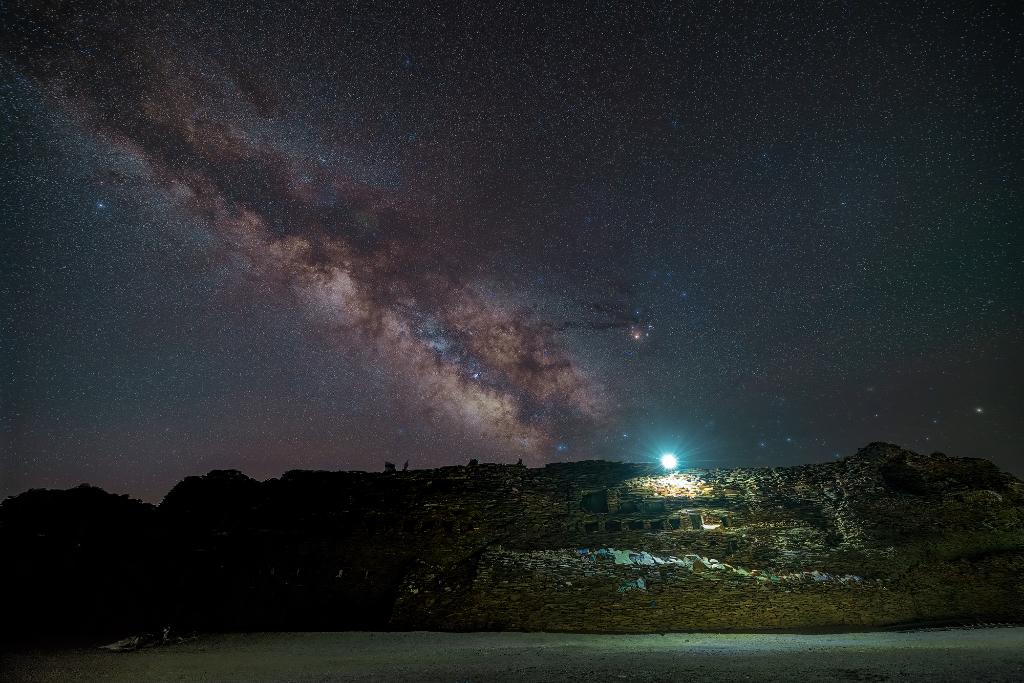
The Milky Way photographed by astronomy enthusiast Jiang Tao of Sichuan Province in Songge Mani Shijing City, Shiqu County, Sichuan Province in May 2020. (Photo provided by me)
In addition to understanding the laws of the rise and fall of the Milky Way, the moon phase also has a great impact on the shooting of the Milky Way. To obtain a good shooting effect, it is necessary to avoid the influence of the full moon. From the 23rd of each lunar month to the seventh day of the following month, it is a more suitable time for shooting.
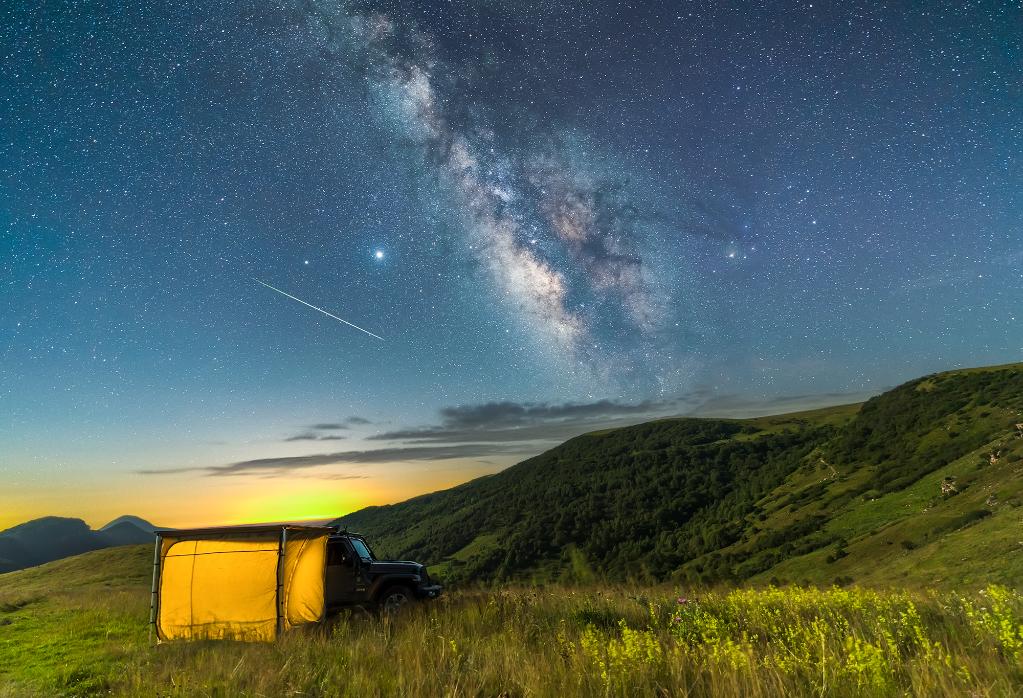
The Milky Way photographed by Shanxi astronomy enthusiast Liu Zhao in Shunwangping Scenic Area, Yuncheng, Shanxi Province in June 2020. (Photo provided by me)
Shooting the Milky Way alone is beautiful, but combining the landscape will make the photo icing on the cake, and the landscape has the function of indicating the geographical location. Therefore, the shooting point should choose a high-altitude area with a wide field of vision, a natural landscape or building with obvious geographical indications, and a suitable prospect.
Shooting the Galaxy first requires one or more shooting equipment with long exposure function, either a camera or a mobile phone, a wide-angle lens with a large aperture is preferred; secondly, a stable tripod is required, and a shutter cable is recommended. A simple shutter cable will make your shooting a lot easier. Finally, you need to prepare the necessary equipment for night travel, headlights, cold, moisture, dust and insect-proof clothing, tents, supplies, etc.

The Milky Way photographed by Beijing astronomy enthusiast Wang Junfeng at the Nanshan Observatory in Xinjiang in June 2019. (Photo provided by me)
Everything is ready, only the parameters are set. If you shoot with the camera, you need to set the manual mode (M block) to shoot the Milky Way, turn on the lens to manually focus (the lens focus switch is switched to MF), the focus position is infinitely far, the aperture theory is the largest, and the image quality is better by subtracting one stop. If you want a longer exposure and the star point is not off-line, it is recommended to use an equator. The white balance can be adjusted according to personal preference, and the original data source format (RAW) can also be adjusted later. At this point, press the shutter, wait a moment, and a gorgeous Galaxy blockbuster will appear in the camera.

The Milky Way photographed by astronomy enthusiast Zhang Bingbing of Shandong Province in Tianhengdao, Jimo District, Qingdao City in June 2021. (Photo provided by me)
In recent years, with the continuous improvement of mobile phone hardware and algorithm optimization, mobile phone shooting Galaxy has become simple and easy to operate. "At present, both Hongmeng system and Android system mobile phones can switch to professional mode to shoot Galaxy, and even some brand mobile phones have star mode and time-lapse mode. Just hold the phone on a tripod to fix it, switch to star mode or time-lapse mode, and press to shoot. In professional mode, the parameters can refer to the camera settings." Wang Junfeng added.
Galaxy micro-recording. (video content provided by Beijing astronomy enthusiast Wang Junfeng)
In June, the summer night is quiet, the night is in the arms; the galaxy is bright, like a dream. Let’s find a good weather, pack our bags, and record the beautiful Milky Way together under the poetic night sky.
Producer: Zhao Cheng
Producer: Hu Qinghai
Planner: Liu Xinhui
Text: Zhou Runjian
Editor: Lian Changyan
Xinhua News Agency, jointly produced by Xinhua News Agency Tianjin Branch
Produced by Star Studio